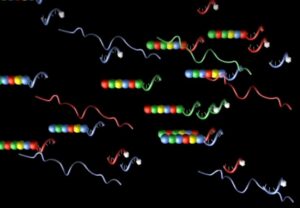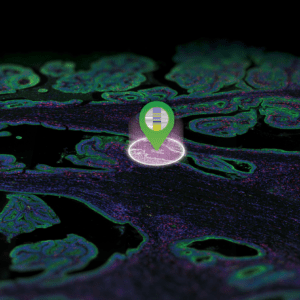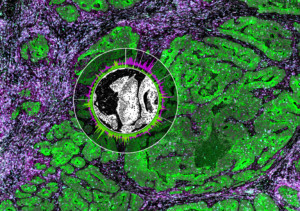
NanoString Blog

nCounter
Common questions in molecular biology: What do oligonucleotides do in PCR?
Oligonucleotides are relatively short single-stranded sequences of nucleotides, the monomeric subunits of both DNA and RNA. The use of oligonucleotides (also known as oligomers or “oligos”) is invaluable in many…

nCounter
Common questions in molecular biology: What are oligonucleotides used for?
A workhorse of molecular biology, oligonucleotides are relatively short single-stranded sequences of nucleotides, the monomeric subunits of both DNA and RNA. Oligonucleotides (often called oligomers or “oligos”) are invaluable in…

nCounter
Common questions in molecular biology: Why is it called DNA barcoding?
DNA barcoding was named for its conceptual similarity to the Universal Product Codes (UPCs) used by supermarkets and other retailers to distinguish commercial products via a unique digital code. Based…

nCounter
Common questions in molecular biology: What is a cell counter used for?
Cell counters are machines, typically automated, designed to count living cells quickly and autonomously. Employed in the life sciences, cell counters quantify cells for a wide range of reasons using a variety of…

nCounter
Why Oligonucleotides Are Critical Components of DNA and RNA Expression Research
With all the advances in molecular biology over the last several decades, one of the most consistently used tools is the oligonucleotide. Oligonucleotides are relatively short (oligo) single-stranded sequences of…

nCounter
How DNA Barcoding Improves Gene Expression Analysis and Biomarker Discovery
The phrase “DNA barcoding” can be applied to several methods of using unique DNA sequences for identification purposes. Sometimes known as “molecular barcoding,” DNA barcoding describes the use of unique…

nCounter
How Cell Counters and Cell Type Profiling Can Help Analyze Gene Expression Profiles
Cell counters, also known as cell sorters, are instruments that separate and count specific cells of interest using characteristic properties of those cells. The original cell counters, known as Coulter…

Clinical Research nCounter
Gene Expression Can Drive Your Research to New Heights
The word “gene” refers not only to the actual physical DNA that codes the gene itself, but also to all related downstream events, including gene expression, gene regulation, and gene…

Digital Spatial Profiling GeoMx DSP
The Birth of Spatial Genomics
NanoString catalyzed the spatial biology revolution in 2019 with the launch of the GeoMx® Digital Spatial Profiler (DSP), but did you know that the beginnings of this nascent field go…

CosMx SMI Spatial Biology Spatial Transcriptomics
What’s New at NanoString for 2023: The Arrival of the First Fully Integrated Single-Cell Spatial Solution
One of the interesting hallmarks of celebrating the start of a new year is the consumption of special foods. For example, in the American South Hoppin’ John, or black-eyed peas,…

Multiomics Spatial Analysis Spatial Transcriptomics
Integrated Spatial Multiomics Deconvolve Multicellular Dynamics in Pancreatic Cancer
In an extraordinary team effort led by the Center for Systems Biology at Harvard Medical School, in collaboration with NanoString, scientist Will Hwang and colleagues used integrated spatial multiomic and…

Digital Spatial Profiling Multiomics Spatial Analysis Spatial Transcriptomics
Spatial Multiomics Identifies New Actionable Therapeutic Targets
Pancreatic cancer represents 3% of the overall cancers in America and yet is responsible for 7% of all cancer deaths. The five-year relative survival rate – the cancer-related death rate…